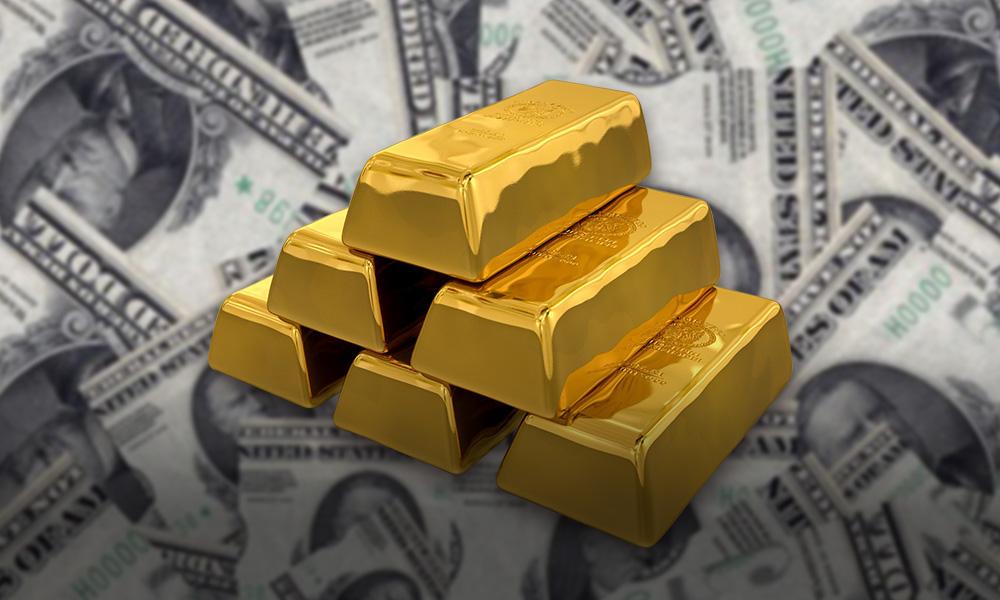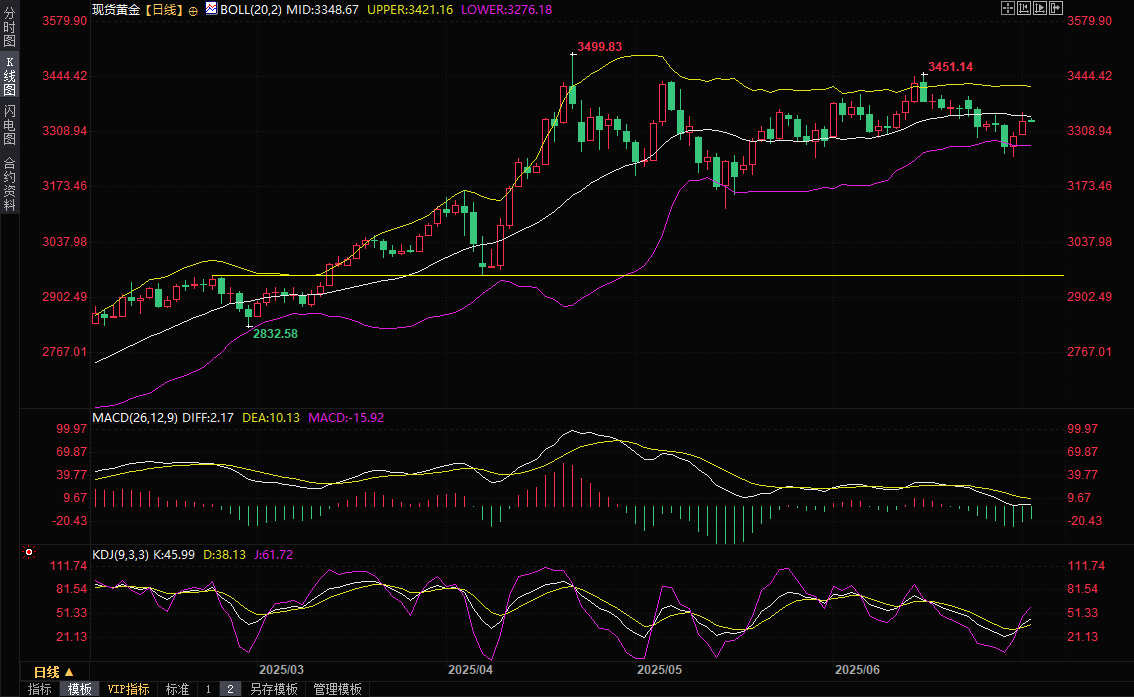Gold trading reminder: Trump's tax cut bill stimulates buying, gold prices rise for two consecutive days to a one-week high, pay attention to the performance of employment data
2025-07-02 07:52:00

Trump's tax cut proposal caused market turmoil
On July 1, the U.S. Senate passed President Trump's extensive tax cut and spending bill. This policy, known as "big and beautiful," not only cuts a number of social service programs, but is also expected to increase the fiscal deficit by $3 trillion over the next decade .
As Marex analyst Edward Meir pointed out, this bill will stimulate inflationary pressure and further increase the US debt burden. In order to repay these debts, the US government may need to raise funds through more financing and borrowing, and this fiscal expansion is usually seen as a positive factor for gold. As a traditional safe-haven asset, gold tends to attract more investors' attention and drive up prices against the backdrop of rising inflation expectations and expanding fiscal deficits.
At the same time, the Trump administration's tough stance on trade policy has also provided additional support for gold. U.S. Treasury Secretary Benson warned that countries may face significantly higher tariff rates as the suspension of trade tariffs approaches on July 9. This uncertainty has exacerbated global market concerns about trade frictions, and investors tend to allocate funds to safe-haven assets such as gold to hedge against potential economic risks. In particular, Trump's statement that he may impose higher tariffs on countries such as Japan has further exacerbated market tensions about the global trade environment, providing momentum for the rise in gold prices.
Manufacturing downturn and unexpected increase in job openings
The complex performance of US economic data has also injected new variables into the gold market. US job vacancies unexpectedly increased by 374,000 in May to 7.769 million, exceeding market expectations. However, the number of recruits fell by 112,000 to 5.503 million, and the June manufacturing PMI showed that the manufacturing industry remained sluggish. A survey by the Institute for Supply Management (ISM) showed that uncertainty in tariff policies has led to supply chain bottlenecks, factories have been waiting longer for raw materials, and companies are cautious about long-term purchasing decisions. Machinery manufacturers even described the current business environment as "terrible", reflecting the impact of trade policies on the real economy.
In addition, the accelerated pace of layoffs coexists with a decline in labor market confidence. The number of layoffs fell by 188,000 in May, but it became more difficult for the unemployed to find new jobs, and the number of people receiving unemployment benefits surged to a three-and-a-half-year high in mid-June. The Conference Board survey showed that the proportion of consumers who believed that jobs were "adequate" fell to the lowest level in more than four years. These data indicate that labor market momentum is weakening, which may prompt the Federal Reserve to adopt a more accommodative monetary policy in the coming months, providing further support for gold prices.
Fed policy and employment data in focus
The direction of the Federal Reserve's monetary policy is another key factor affecting gold prices. Fed Chairman Powell reiterated at the central bank meeting in Sintra, Portugal that the Fed needs to wait for more data to assess the impact of tariffs on inflation before cutting interest rates. Although Powell did not explicitly rule out the possibility of a rate cut at the July 29-30 meeting, the market generally expects the Fed to start cutting interest rates in September, and may cut interest rates twice this year, each time by 50 basis points. Powell emphasized that the current US economy is solid, the labor market is strong, and the unemployment rate is still at a historical low, which shows that the Fed is not in a hurry to adopt an easing policy immediately.
However, the upcoming US employment data provides new clues for the market. Wednesday's ADP employment data and Thursday's non-farm payrolls report will be important bases for investors to judge the direction of the Fed's policy . Economists expect that non-farm payrolls may increase by 110,000 in June, and the unemployment rate may rise slightly from 4.2% in May to 4.3%. If the employment data is weak, it may further enhance the market's expectations for interest rate cuts, thereby pushing up gold prices. On the contrary, if the data is strong, it may temporarily curb the upward momentum of gold, but in the long run, inflationary pressures and trade uncertainties will still provide support for gold.
Discussion on the Status of the US Dollar and the Global Reserve Currency Structure
The status of the U.S. dollar as a global reserve currency has recently sparked widespread discussion, which also has far-reaching implications for the gold market. At the annual central bank meeting in Sintra, Portugal, European Central Bank President Christine Lagarde said that if the eurozone can promote structural reforms such as capital market integration, the euro may become an alternative to the U.S. dollar in the future. The U.S. dollar currently accounts for 58% of global foreign exchange reserves, while the euro accounts for 20%. Although Lagarde stressed that this transformation will not happen overnight, she pointed out that in the current uncertain environment, investors are looking for diversified options, and the euro is benefiting from this.
At the same time, Bank of Japan Governor Kazuo Ueda and Bank of England Governor Bailey expressed similar views, believing that any major changes in the status of the US dollar will be a long-term process and depend on the progress of reforms in other economies. Lee Chang-yong, governor of the Bank of Korea, mentioned that although US dollar assets still dominate, discussions about the long-term status of the US dollar are heating up. Such doubts about the dominance of the US dollar may weaken the attractiveness of the US dollar, thereby indirectly pushing up gold prices. In particular, the US dollar index fell 0.13% on Tuesday, hitting its lowest point since March 2022 at 96.37, reflecting market concerns about trade policies and economic slowdown, which created favorable conditions for gold to rise.
Market outlook: short-term volatility or long-term growth?
Looking ahead, the trend of the gold market will be affected by multiple factors. In the short term, the July 9 trade tariff deadline and the upcoming employment data will be key variables. If tariffs are raised as expected, global trade tensions may intensify, pushing up safe-haven demand; if employment data is weak, expectations of interest rate cuts may further heat up, which is good for gold. However, StoneX analyst Rhona O'Connell predicts that the average price of gold may fall to $3,000 per ounce in the fourth quarter, and may even be lower by the end of the year. This forecast reflects the market's dual expectations of inflation and economic uncertainty.
In the long run, the widening fiscal deficit, rising inflationary pressures, and potential changes in the U.S. dollar's reserve currency status will provide structural support for gold. In particular, the policy uncertainty of the Trump administration may continue to drive investors to allocate funds to safe-haven assets such as gold. In addition, the continued demand for gold from central banks and the potential increase in geopolitical risks may further consolidate the upward trend of gold.
In addition to the ADP employment report, the number of layoffs by challenger companies in the United States in June will also be released on this trading day, which investors also need to pay attention to.

(Spot gold daily chart, source: Yihuitong)
At 07:48 Beijing time, spot gold was trading at $3,338.41 per ounce.
- Risk Warning and Disclaimer
- The market involves risk, and trading may not be suitable for all investors. This article is for reference only and does not constitute personal investment advice, nor does it take into account certain users’ specific investment objectives, financial situation, or other needs. Any investment decisions made based on this information are at your own risk.










